The international demand for fish is seeing tremendous growth, fueled by an expanding global population, increased incomes, and improved awareness of fish as a healthy and sustainable source of protein. Yet, wild capture fisheries are not able to keep up with this growing demand, with most stocks already being overfished and subject to environmental stress. As a crucial answer to closing this gap and providing food security, aquaculture – the cultivation of aquatic animals – represents a managed, low-water footprint, and potentially more sustainable way of growing food. This growing industry is not only key to fulfilling consumer demand but also of interest for business investment with its rapid growth and attractive returns.
Worldwide, the aquaculture sector is growing strongly with a projected value of USD 360.6 billion by 2032, following a healthy compound annual growth rate (CAGR) of 4.5% over 2024-2032. India is a key player in this international aquaculture movement, taking advantage of its long coastlines, extensive river and inland waterway system, and rich native aquatic species. The fish production of the country is showing remarkable growth, and projections for the 2023-24 financial year stand at a whopping 17.5 million metric tons.
Apart from its role in food production, the Indian fishery sector is one of the big economic drivers, giving employment to about 28 million individuals on its coastline and rural areas and contributing substantially towards the total GVA of the country at 1.09% and agricultural GVA at 6.72%. Getting into this vibrant and important industry is no easy task.
In the following article, you will discover all the information you need to know about how to successfully start and operate a successful fish farming business in India.
What is Fish Farming (Aquaculture)?
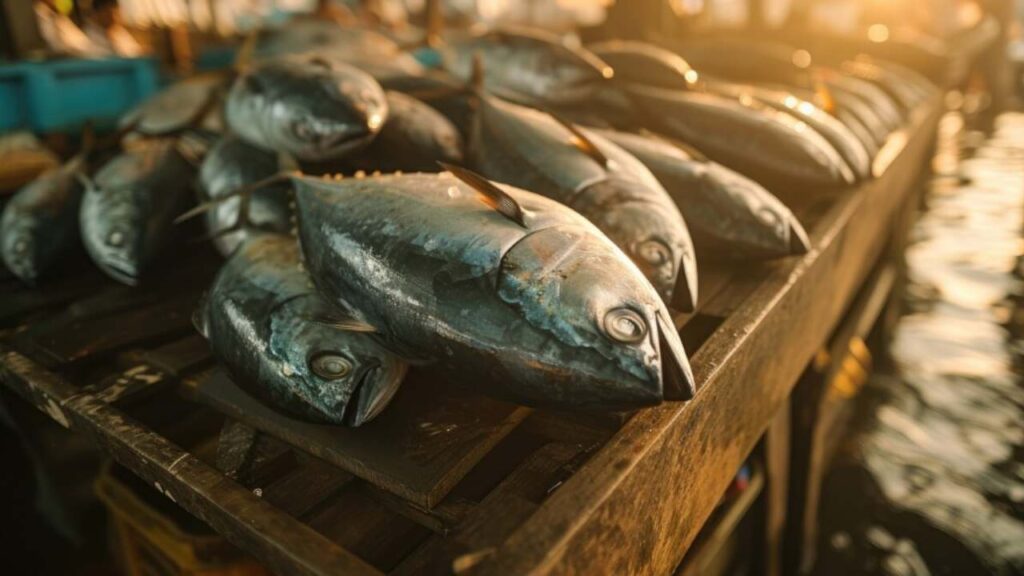
Aquaculture refers to the design and management of water systems where fish and other aquatic species are bred, raised and harvested for humans. Aquaculture is not the same as commercial fishing. It’s more like farming fish instead of catching them from the wild. Artificial or natural water bodies such as ponds, tanks, cages within rivers or lakes or raceways are used to cultivate fish populations for either consumption purposes or other objectives.
Aquaculture includes many different techniques such as small-scale backyard farming all the way to sophisticated and high-tech industrial projects. The main objective is to increase yields above what can be obtained from purely natural resources. Managing the environment in this way helps fisheries enhance production, combat illnesses, improve stock genetics and consistently provide safe and reliable seafood – promoting both food security and economic prosperity.
Potential of Fish Farming Business in India
India is a world leader in fisheries, ranking among the top three producers of fish and occupying the second spot among countries with the largest aquaculture industries. A range of positive factors makes the field of fish farming business incredibly promising for success in India.
- High Domestic Demand: Many people in India depend on fish as their primary source of protein, especially in coastal regions and parts of eastern India. Demand for fresh and high-quality fish is increasing steadily due to the expansion of the population, higher disposable incomes and increased health consciousness among Indians.
- Export Opportunities: Indian farmed fish and shellfish find considerable popularity in markets like the USA, European Union, Southeast Asia and Japan. This gives export-oriented fish farming businesses an opportunity to generate valuable foreign currency.
- Diverse Agro-Climatic Conditions: Due to its diverse topography and weather conditions, India can grow many different types of fish to meet various types of domestic and international demand. A variety of fish species are farmed in different parts of the country, including carps in the plains, trout in the Himalayas and shrimp on the coast.
- Availability of Resources: India has an ample supply of water bodies that afford the opportunity to grow a variety of fish species through aquaculture.
- Government Support and Initiatives: The Indian government supports aquaculture extensively with initiatives such as programs like the Pradhan Mantri Matsya Sampada Yojana (PMMSY) as well as subsidies and schemes. The programs are intended to increase the overall output, efficiency and growth of the fisheries industry in the country.
- Technological Advancements: Using advanced and scientific methods like enhanced nutrition, disease control and genetic selection is resulting in increased harvests and enhanced financial returns in aquaculture.
Why Choose Fish Farming in India?
There are distinctive incentives why fish farming business would be an attractive business opportunity for those in India.
- Untapped Potential: While the sector has seen impressive growth, many fishponds and water bodies across India remain underutilized for aquaculture. This creates exciting opportunities for the rapid growth and development of aquaculture industries.
- Traditional Knowledge and Adaptability: India has a long history of fish farming. Using traditional techniques while incorporating improved technologies enables small entrepreneurs to achieve promising business results. Indian farmers are known for their ability to easily adopt novel methods of cultivation.
- Growing Domestic Market Maturity: People are more concerned about receiving fish that is produced under safe conditions, is fresh and can be traced back from the point of purchase to the production source. Reliance only on capturing wild fish may not meet the increasing consumer desires for clean and reliable seafood.
- Focus on Nutritional Security: The government’s efforts to ensure nutritional security and provide adequate protein generate favorable conditions for fish farming because fish contains an abundance of nutrients required for good health.
- Infrastructure Development: The development of resources such as cold storage, processing units and improved market access plays a vital role in making fish farming business more profitable.
- Entrepreneurial Ecosystem: There is an increasing amount of support for agribusiness and aquaculture startups, enabling entrepreneurs with guidance, funding and advanced technologies.
Step-by-Step Guide to Starting Your Fish Farming Business
Executing a successful fish farming operation demands great focus and organization. Follow these essential steps to get started.
Step 1: Conduct Thorough Research and Planning

It’s crucial to do a thorough background study and investigation before starting your fish farming journey. Learn about aquaculture, the types of fish farming that can be successful in your area and the overall demand and prices in the fish market.
- Learn the Fundamentals: Study the characteristics of various fish, their growth habits, dietary needs, likely health problems and strategies for maintaining water quality. Visit local fish farms, speak with other farmers and seek advice from fisheries professionals or the relevant government offices.
- Assess Your Resources: Examine your access to resources like land, water, electricity and staff.
- Regional Suitability: Determine which fish varieties perform well in the ambient climate and soil in your area (since you will build ponds).
- Initial Market Study: Learn which types of fish are most popular in your area and find out their current market price range.
Step 2: Develop a Comprehensive Fish Farming Business Plan
A business plan provides the framework you need to achieve your goals. It should include your goals, detailed plans for accomplishing them and an estimate of your revenues and expenses. Outline your ambition, values and the way your business will be structured.
Market Analysis:
- Target Market: Determine the groups of people who may become your customers – residents near your farm, wholesalers, retailers, food service providers or buyers in other countries.
- Demand and Supply: Study how much consumers require certain fish and compare that to what local suppliers already offer. Identify any gaps or opportunities.
- Competition: Learn from other fish farms operating within the area. determine how they are doing, their main disadvantages, typical prices and sales methods.
- Price Analysis: Examine the prices you can realistically sell the species you are planning to grow.
Determining the Most Suitable Method of Fish Farming.
- Extensive Fish Farming: Fewer fish raised in the pond that feed themselves and need less supplemental feed. Often done in large ponds.
- Semi-Intensive Fish Farming: Moderate stocking density is combined with the use of additional feed and yields are in the middle range. India commonly practices this type of fish farming.
- Intensive Fish Farming: Stocking large numbers of fish, requiring regular inputs such as food, aeration and water exchange, resulting in high level of production. Requires more skill and capital. Examples are cage culture, raceways and Recirculating Aquaculture Systems (RAS).
- Cage Culture: Growing fish in cages placed underwater in lakes, reservoirs or marine environments.
- Pond Culture: It relies on old-fashioned earthen ponds as the primary structure.
- Tank Culture: Many types of farms utilize cement, plastic or fiberglass tanks to contain fingerlings or harvestable fish.
- Integrated Fish Farming: Joining fish farming with livestock or crop farming to make efficient use of available resources. Your decision should be influenced by your financial resources, available land, skills and willingness to take on risks.
Selecting the Right Fish Species:
- Market Demand: Select fish that have a high demand and command high prices.
- Growth Rate: Choose species that grow quickly so you can earn income sooner from your farm.
- Hardiness: Choose species known for their disease-resistance and ability to handle fluctuations in water quality.
- Availability of Seed: Make sure that the exact species you want to raise has readily accessible and high-quality fish seed (fingerlings) for purchase.
- Feed Conversion Ratio (FCR): Fish species that convert their feed into more biomass tend to be more profitable.
- Compatibility (for polyculture): Select species that can coexist peacefully when raised together in the same pond.Common fish species farmed in India are Indian Major Carps (Rohu, Catla, Mrigal), Exotic Carps (Common Carp, Grass Carp, Silver Carp), Tilapia, Pangasius and Murrel. The most popular species raised in brackishwater are Shrimp (Vannamei and Black Tiger) and Seabass.
Financial Plan:
- Startup Costs: List every upfront expense required for the project: land acquisition, pond construction, essential equipment (pumps, aerators, nets, testing kits), initial fish seed, licenses and a safety fund.
- Operational Costs: Determine normal monthly expenses such as fish feed, electricity bills, labor wages, healthcare supplies, water costs, maintenance costs and marketing expenses.
- Funding Sources: Detail your sources of funding by listing personal savings, bank loans, government assistance and possible investors.
- Projected Revenue: Predict your revenue by considering the anticipated yield, survival rate and market demand.
- Profitability Analysis: Predict the amount of profit earned, determine when expenses will be covered and calculate the rate of return.
Marketing and Sales Strategy:
- Distribution Channels: Which channels will you use to distribute your fish? Selling directly to consumers or distributing your production to wholesalers, retailers, restaurants or processing units.
- Pricing Strategy: Set your prices considering expenses, competitor rates and the value the market places on your product.
- Promotion: How do you plan to market your products? Advertising locally, forming alliances and creating a name for excellence.
Step 3: Secure Necessary Permits and Licenses
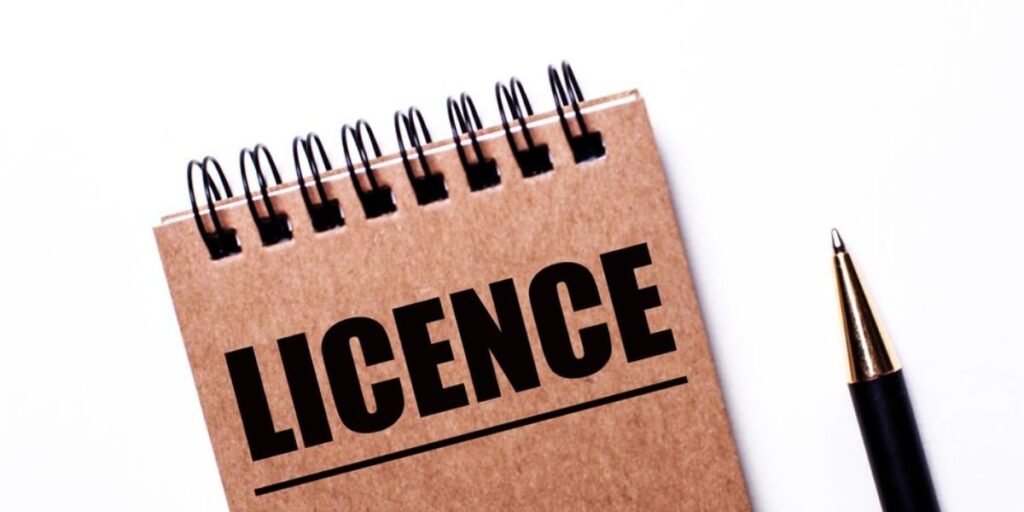
Legal operation of a fish farm calls for obtaining the necessary permits and licenses. The specific permits and licenses required will differ based on the size and nature of your farm, as well as the region in which you operate.
- Business Registration: Register your business entity.
- Land Permits: Secure the necessary rights and permissions to use the land for fish farming.
- Water Usage Permit: It is commonly required to obtain authorization for taking in and releasing water, especially at larger operations.
- Fisheries Department Registration/License: You normally need to register your fish farm with the fisheries department in your state.
- Environmental Clearances: Large-scale fish farming operations may require an Environmental Impact Assessment (EIA) and an authorization from the pollution control authority.
- GST Registration: Your farm needs to register with Goods and Services Tax (GST) if its annual revenue exceeds the stipulated amount as prescribed by the Indian government.
- Export/Import License (if applicable): You should register for export/import licenses if you intend to buy imports or sell exports.
Step 4: Arrange for Financing and Budgeting

Fish farming can be capital-intensive. Explore various funding options:
- Personal Savings: Investing your own capital minimizes the financial risks.
- Bank Loans: Several public and private sector banks provide loans to aquaculture enterprises under their agricultural loan programs. Additionally, NABARD assists banks by refinancing their loans for aquaculture-related ventures.
- Government Schemes: PMMSY is a major initiative by the Indian government offering considerable financial incentives, subsidies and aid to various sectors in aquaculture. State-level programs are also available.
- Venture Capital/Private Equity: A good financing solution for extensive or advanced projects would be venture capital or private equity.
- Microfinance Institutions: For smaller-scale farmers.
Step 5: Set Up Your Fish Farm Infrastructure

Site Selection and Preparation: Pick a location that has clayey soil and a continuous water supply from a nearby river, canal, well or rainwater harvesting setup. You should look for a site with generally level land or some degree of slope. Remove all unwanted plants or obstacles on the chosen site.
Pond/Tank Construction:
- Earthen Ponds: Build ponds to the correct size, with inlet and outlet points and dykes to control water levels. The sizes and number of ponds will vary according to the scale and components of your production system (e.g., nurseries, juvenile tanks, grow-out ponds).
- Tanks: Put the tanks at ground level on a flat area. You can use cement tanks, HDPE plastic tanks or fiberglass tanks.
- Cages/Pens: Supplies and setup strong cages or pens, then place them safely within the chosen body of water.
- Water Supply and Drainage System: Set up a reliable way to both fill the water bodies and drain them as needed for harvesting or exchanging water.
- Aeration System (if needed): Aerators such as paddlewheels or diffused aerators might become necessary when growing fish densely or maintaining the health and growth of your stock.
- Security: Use fencing, lighting or if required, security guards to secure your pond against theft.
- Support Facilities: If you are planning to grow and produce your own fingerlings, you could benefit from a small shed, office and hatchery on the property.
Step 6: Procure Quality Fish Seed (Fingerlings)

The quality of the fish seed (fry, fingerlings or juveniles) you use significantly influences the outcome of your fish farm.
- Source: Obtain your fish seed from respected hatcheries that are licensed or affiliated with the government. Do not buy from unregulated or untrustworthy suppliers.
- Species Verification: Make sure the seed you receive matches the species you are planning to farm.
- Health Check: The seed must appear to be in good condition, without noticeable diseases or physical defects and be a similar size.
- Acclimatization: Allow the seed to adjust to the pond/tank water gradually so they minimize stress levels and mortality. To achieve proper acclimatization, gradually introduce your farm water into the container or bag in which the seed arrived.
- Stocking Density: Do not overstock your ponds/tanks. Stock your ponds according to species-specific density guidelines, relevant farming systems and efficient management. Overcrowding causes increased stress for fish, hampers their rate of growth, predisposes them to illnesses and results in deteriorating water quality.
Step 7: Implement Best Practices for Fish Farm Management
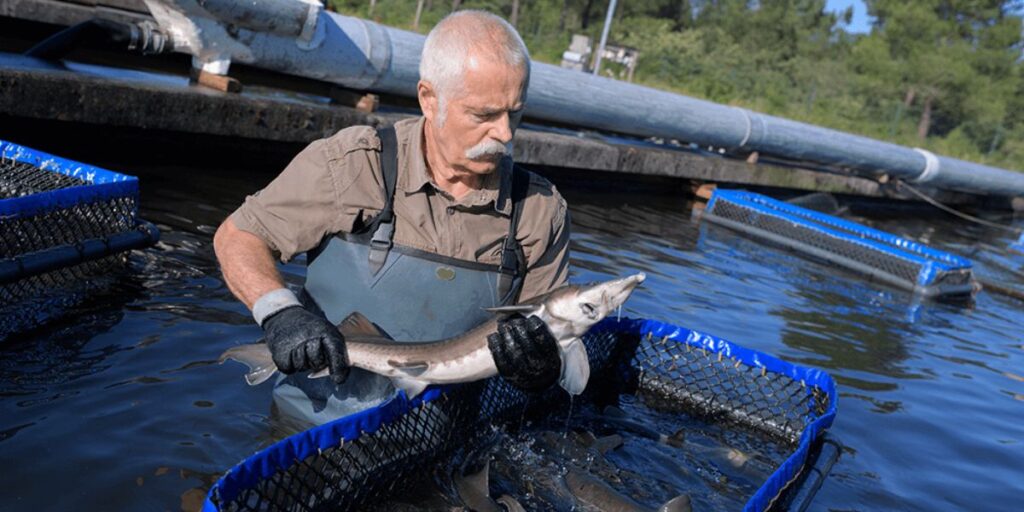
Day-to-day management is crucial for healthy fish growth and high yields.
Water Quality Management:
- Regular Monitoring: Regularly test and monitor levels of temperature, pH, DO, ammonia, nitrites and alkalinity in the pond.
- Water Exchange: Replace a portion of the water every now and then to remove built-up waste and ensure water quality, especially in densely populated systems.
- Aeration: Run the aerator periodically, prioritizing the morning or times when do is below the required level.
- Pond Fertilization (for extensive/semi-intensive systems): Fertilize the pond with either manures or chemical fertilizers to stimulate the growth of natural fish food organisms (plankton).
Feeding Management:
- Type of Feed: Give the fish the right type of feed according to their species, age and size. Feeds may include natural foods (like plankton), supplements (such as rice bran or oil cakes) and commercially prepared pellets.
- Feeding Schedule and Quantity: Give fish 2-3 portions of feed every day spread out over the day. Feed the fish according to their body weight in the pond (2–5% of body weight generally). Allow adjustments for differences in feeding and growth. Make sure not to overfeed so that leftovers do not spoil and thus hurt both the pond environment and your finances.
- Feed Quality: Select feed with the appropriate nutrients your fish need. Store feed in a cool and dry place to ensure it does not get rotten.
Health Management and Disease Control:
- Observation: Monitor the fish daily for indications of stress, sickness (lesions, abnormal movements or loss of appetite) and deaths.
- Biosecurity: Adopt biosecurity protocols such as cleansing equipment and restricting the movement of people in and out of the farm.
- Prophylactic Measures: Apply permitted sanitizers or acidifiers to keep the pond water clean.
- Treatment: Consult a fisheries expert or veterinarian for assessment and appropriate treatment whenever diseases appear in your fish ponds. Apply approved drugs and chemicals only as necessary.
- Record Keeping: Keep track of what you feed the fish, their growth rate, changes in water quality, any diseases that emerge and the medicines given.
- Growth Monitoring: Periodically check the growth of your fish and adjust the amount of feed accordingly. This information helps you decide when to harvest while considering the optimum biomass.
- Weed and Pest Control: Prevent weeds, birds, snakes and predatory fish from damaging your fish or stealing their food.
Step 8: Harvesting and Post-Harvest Management
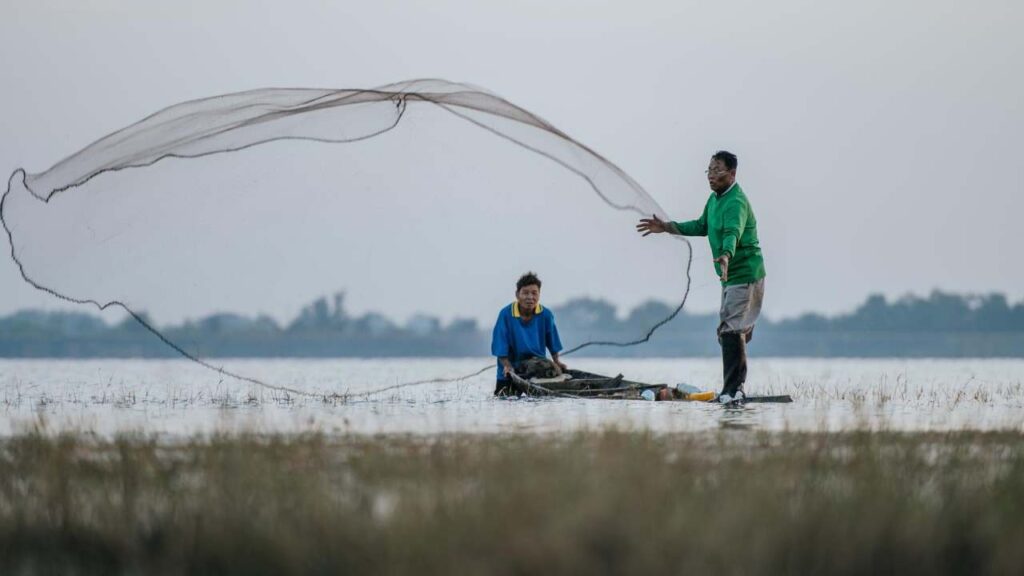
It is important to time and handle your harvest correctly to achieve the highest price for your fish.
- Timing of Harvest: Fish are ready to be harvested only after they have grown to the preferred market size. Timing will vary according to the species, marketing needs and the way you run your business. It is possible to only take the larger fish in some systems so that the smaller ones can keep growing.
Harvesting Methods:
- Netting: Different kinds of nets such as seine nets, cast nets and gill nets are widely used.
- Draining: Draining the pond completely before harvesting allows for a complete catch.
- Hand Picking: Certain species or for cases where there is limited space.
- Pre-Harvest Preparation: You should stop feeding the fish for a day or two before harvesting. This will help prevent them from being full so that they keep better.
- Careful Handling: Be mindful when harvesting fish so as to prevent any harm that could impair their quality and time when sold on the market.
Post-Harvest Handling:
- Cleaning: Rinse the freshly harvested fish with clean water to get rid of dirt and mucus.
- Sorting and Grading: Group fish by species and size so you can sell them to wholesalers or retailers based on their requirements and obtain the best prices.
- Chilling/Icing: Put the fish directly on a bed of crushed ice inside insulated boxes to keep them cool and stop them from going bad. Ice should weigh the same as the fish when put together.
- Storage: Keep the fish in a cold storage unit until they are needed for sale.
- Transportation: Transfer fish in properly insulated containers filled with ice to move them quickly from the farm to the market.
Step 9: Marketing and Sales
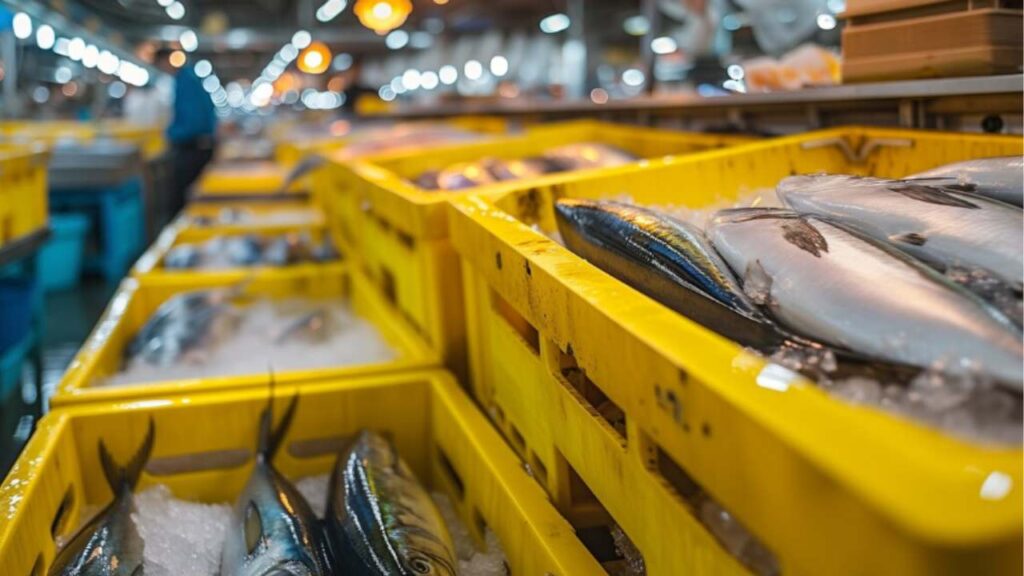
A sound marketing plan significantly increases your chances of making a profit. Identify Your Buyers: Revisit your market analysis. Potential buyers include:
- Local Markets: Pitching your products directly to customers in local villages or cities.
- Wholesalers/Commission Agents: They are especially vital for wholesale trade when you sell in bulk. They already maintain connections with buyers in various retail outlets.
- Retailers: Fish vendors, supermarkets.
- Restaurants and Hotels: Needs to regularly receive fish of good quality.
- Processing Units: Value can be increased by cutting, freezing or even preparing the fish for sale.
- Export Markets: You must adhere to high-quality benchmarks and official sanctions.
- Build Relationships: Establish strong relationships with your buyers to maintain your business consistently.
- Pricing: Choose prices by taking into account your operational expenses, market demand, the quality of the produced fish and its size.
- Value Addition: Try adding simple value by gutting, scaling and/or filleting your fish if you are able to do so. This can fetch higher prices.
- Branding and marketing (if you operate a large farm): Establishing a reputation for quality and freshness through your business name helps retain customers.
- Explore Cooperatives: Farmer cooperatives may provide an opportunity for collective marketing, more powerful negotiations and reaching wider customer bases.
- Online Platforms: There are new online platforms and B2B marketplaces where you can sell your agricultural produce.
Types of Fish Commonly Farmed in India
Farmers in India grow different types of fish in various aquatic settings. Among the frequently cultivated species are:
Freshwater Fish:
Indian Major Carps:
- Rohu (Labeo rohita): Enjoyed for its flavor, widely raised alongside other fish species.
- Catla (Catla catla): A fast-growing surface feeder.
- Mrigal (Cirrhinus mrigala): It forages from the riverbed and is a common component of carp polycultures in India.
Exotic Carps:
- Common Carp (Cyprinus carpio): Resistant, reproduces quickly and thrives under many types of conditions.
- Grass Carp (Ctenopharyngodon idella): Grazes on submerged plants and can be both harvested as food and employed in pest management.
- Silver Carp (Hypophthalmichthys molitrix): A phytoplankton feeder, grows rapidly.
Tilapia (Oreochromis niloticus / Mossambicus):
- Pangasius (Pangasianodon hypophthalmus): Air-breathers that grow fast and are beneficial for intensive culture.
- Magur (Clarias batrachus): It is native to India and enjoys considerable popularity among buyers.
- Singhi (Heteropneustes fossilis): A catfish that is popular in traditional medicine and also in the aquaculture market.
- Murrels (Channa striata, Channa marulius): They eat meat rather than plants and are treasured both for their delicious flavor and therapeutic benefits.
Freshwater Prawns (Macrobrachium rosenbergii):
- Trout (Rainbow Trout – Oncorhynchus mykiss) is a species widely reared in hilly areas such as the Himalayas and the Western Ghats for fishing and medicinal benefits. Coldwater fish are cultivated in the hilly areas of the Himalayas and Western Ghats.
Potential Challenges and How to Overcome Them
Fish farming business brings with it a number of obstacles that must be addressed.
Disease Outbreaks: Fish are prone to bacterial, viral, fungal and parasitic infectious diseases.
- Overcome: Ensure the water is clean and well oxygenated, limit stocking density, offer feeding that meets dietary needs, follow hygiene rules, get veterinary help quickly and choose varieties that cope with existing illnesses.
Poor Water Quality: Changes in dissolved oxygen, ammonia and pH levels cause stress and may result in fish death.
- Overcome: Monitoring water quality closely, providing sufficient oxygenation, feeding mindfully and regularly exchanging partial amounts of water.
Limited Access to Good Quality Seed and Nutritious Feed. Access to good quality fish seed and feed is sometimes challenging due to costs or availability in certain areas.
- Overcome: Source seed from certified hatcheries. Consider preparing feed on-site if it is practical and cost-effective for the farm or team up with other farmers to buy feed in bulk.
High Input Costs: Feed, electricity and labor expenses often contribute a large portion to overall expenses.
- Overcome: Improving operational efficiency, selecting the right feed components, reducing energy wastage and implementing effective financial strategies for your business.
Market Price Fluctuation: Changes in fish prices may compromise profitability in the fish farming industry.
- Overcome: Understanding market trends, selling directly, applying value-adding methods and offering contractual arrangements whenever appropriate.
Government Support and Schemes for Fish Farming Business in India
Strategies devised by the government at all levels encourage the growth of fish farming in India.
Pradhan Mantri Matsya Sampada Yojana: launched by the Government of India. It aims to promote the green revolution in the fisheries sector by offering financial support across many areas such as aquaculture practices, hatcheries, feed production and marketing.
- Construction of new ponds and tanks.
- Upgrading existing farm facilities by using modern technologies.
- Conducting research and training centres for fish seed production.
- Establishment of Recirculating Aquaculture Systems (RAS) and Biofloc systems.
- Promoting cage culture in lakes and offshore waters.
- Seaweed cultivation and ornamental fisheries.
- Establishment of efficient channels for storage, preservation and the marketing of fish products.
- Skill development and training. Beneficiaries under PMMSY are eligible for subsidies and the government provides additional support to women, SC/ST individuals and entrepreneurs in less developed regions.
Schemes
- Fisheries and Aquaculture Infrastructure Development Fund (FIDF): The FIDF finances state governments and other state organizations so that they can improve aquaculture structures and installations.
- Kisan Credit Card (KCC) Scheme: Agriculture Minister Narendra Singh Tomar launched the provision for KCC to assist fish and livestock farmers with their working capital needs.
- National Fisheries Development Board (NFDB): NFDB is instrumental in guiding and assisting state governments in implementing fisheries development schemes, offering expertise and promoting environmentally friendly aquaculture methods.
- State-Specific Schemes: A number of state governments provide assistance with financial incentives and concessions for building ponds, obtaining fish seed, feed and equipment.
- Training and Extension Services: Fisheries departments, agricultural universities like ICAR-Central Institute of Freshwater Aquaculture (CIFA) and ICAR-Central Institute of Brackishwater Aquaculture (CIBA) and Krishi Vigyan Kendras (KVKs) conduct various training workshops and extension services to educate fish farmers about scientific cultivation methods.
- Support for FPOs: Government initiatives support the establishment of Fish Farmer Producer Organizations (FFPOs) to help fish farmers achieve greater efficiency, more favorable prices and get a wider range of production resources and markets.
Conclusion
Indian fish farming business goes beyond being a mere venture; It plays an essential role in strengthening food security, uplifting nutrition, creating job opportunities and boosting the economy. Blessed with abundant aquatic resources, growing domestic need, promising international markets and wholehearted backing from the authorities, the industry presents a fertile playground for enterprising minds.
Launching a fish farming business demands a strong commitment, significant amount of patience and the flexibility to adapt to changing circumstances. Those who consistently research, plan effectively and meticulously run and market their ventures will find success and longevity in the flourishing arena of Indian aquaculture. Significant progress is being made in the blue revolution, providing many chances for people to participate and reap its advantages.
READ ALSO: Most Profitable Franchise in India
FAQs
Is it possible to make a profit from fish farming in India?
Fish farming in India can be extremely profitable as long as scientific methods are followed. What determines if a business will be profitable is the type of animal chosen, the number of animals raised, how efficiently the farm is managed.
How much money is needed to start a small fish farm?
The transformation cost depends largely on the land you own, the farming process, the animals you pick and the scale involved. Setting up a small basic earthen pond can start from a few lakhs of rupees.
What is the most suitable fish for farming as a beginner in India?
For freshwater beginners, Rohu, Catla, Tilapia or Pangasius are typically recommended as they are sturdy, simple to care for and easy to market.
How can I obtain government financial aid for fish farming?
You can benefit from subsidies given by the government mainly using PMMSY and other state-specific programs.
